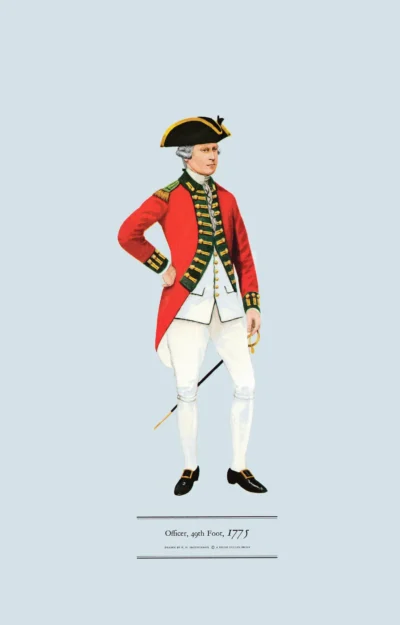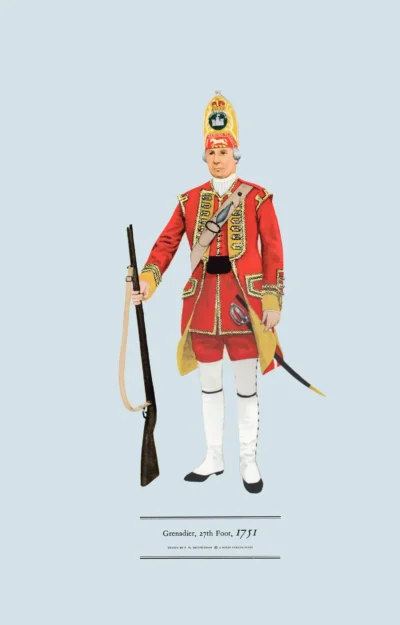Grenadier, 2nd Foot, 1715 (Queen’s Royal Regiment)
£12.50
The Queen’s Royal Regiment of Foot merged into The Princess of Wales’s Royal Regiment in 2006 (scroll down for a more detailed Description)
Published 1965 by © Hugh Evelyn Limited; drawn by Colonel Philip Henry Smitherman (1910-1982), Royal Corps of Signals
Size: c. 24.5 x 37.5 cm [9 ½ ″ x 14 ½ ″] (may vary slightly from printers’ cut 50 years ago)
Printed on on medium cardstock weighing 144 g/sm2 faced in light greyish blue (RGB c. d4e1e8)
Print is STANDARD size – shipping is the same for 1 to 10 prints (based on largest print size in your order) – see Shipping & Returns.
In stock
Description
The details for this plate come from two contemporary figures held by the Queen’s Royal Regiment (now the Princess of Wales’s Royal Regiment). The hat is of familiar grenadier shape with stiff front and the red bag behind standing up with its white tuft showing. The front was of the regimental facing colour (blue) but here the front is red, with an elaborate design incorporating the Prince of Wales’ feathers. In 1685 the regiment became the Queen Dowager’s Regiment of Foot (after Queen Catherine, Charles II’s widow) and in 1703 The Queen’s Royal Regiment of Foot. In 1715, it was renamed The Princess of Wales’s Own Regiment of Foot after Caroline of Ansbach, then Princess of Wales, and was re-designated The Queen’s Own Regiment of Foot in 1727 when the Princess became Queen. The lamb was the crest of Catherine of Braganza, Charles II’s queen. As part of her dowry she brought the colony of English Tangier, to garrison which the 2nd Foot was raised in 1661 as the Tangier Regiment. The grenadier is wearing long woollen socks pulled over his knees instead of the spatterdashes shown earlier. He is shown with a plug bayonet which had a wooden handle wedged in the end of the barrel of the flintlock. This was soon superseded by the ring bayonet, like that in use to-day, which allowed the weapon to be fired with it in position.
Source: Wooden recruiting figure, in possession of the Queen’s Royal Regiment (in 1965).
Additional information
| Weight | 0.0131 kg |
|---|---|
| Dimensions | 23 × 37 cm |





